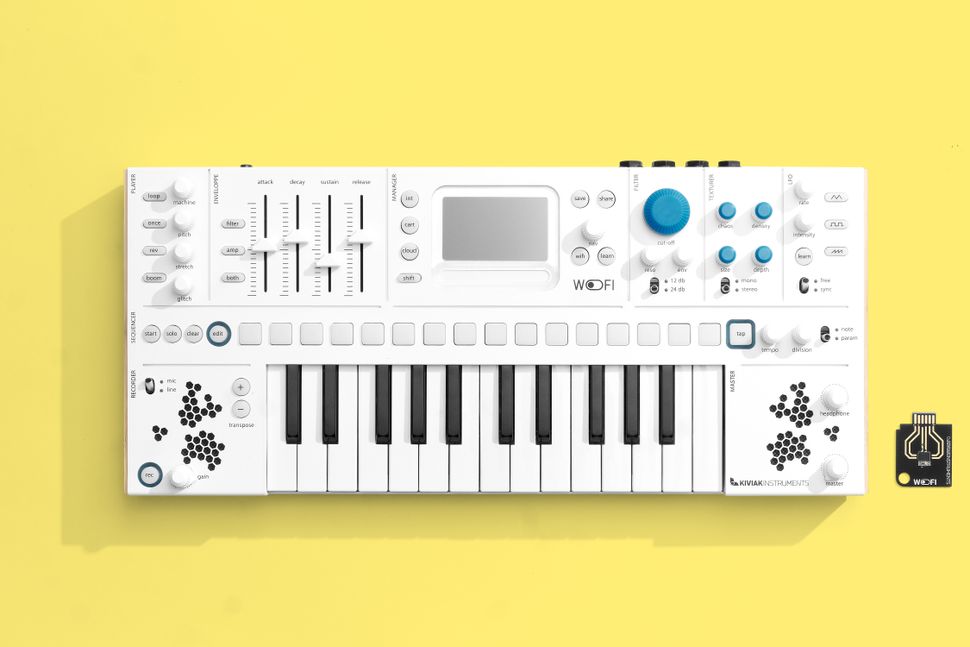After smashing its target on Kickstarter, this sampling keyboard gets an official launch
Launched on Kickstarter last October, Kiviak Instruments’ WoFi is a cloud-connected sampler inspired by classic ’80s and ’90s sampler keyboards.
The good news is that WoFi smashed its Kickstarter target of €100,000 and is now being shipped to supporters, but the even better news is that WoFi is now available for pre-order, with the first units shipping in mid-October.
The user can record samples into WoFi with the internal microphone or stereo input, or they can load samples and presets via the onboard WiFi connection from WoFi’s cloud-based sample management platform, mywo.fi. Samples can also be loaded through WoFi’s dedicated cartridge format, a design touch Kiviak have described as a “tribute to old gaming machines with cartridges”.
Samples can be edited, sliced, pitch-shifted, time-stretched and mapped to the keyboard before being played back with 10-voice polyphony. Sounds can also be processed through a number of emulations of classic samplers, giving them colour, texture and lo-fi character. They can then be run through an ADSR envelope (assignable to amp, filter, or both) and a digital low-pass filter with two slopes, 12dB and 24dB.
Samples can also be processed with WoFi’s Texturer, a harmonizing granular effect that Kiviak has described as “halfway between synthesis”.
WoFi’s 25-key keyboard is velocity-sensitive and equipped with aftertouch: both of these can be assigned to any parameter for expressive performance possibilities. It’s also battery-powered: this, along with the internal speakers and microphone, make it an impressively portable music-making device.
In terms of ins and outs, WoFi is pretty well-equipped and will play nice with external instruments and gear: we’ve got ins and outs here for line-level stereo audio, CV/Gate, analogue sync and MIDI, in addition to MIDI Thru, a headphone out and a USB connection.






